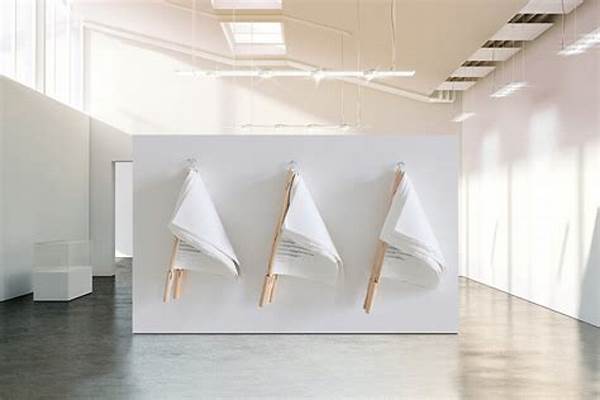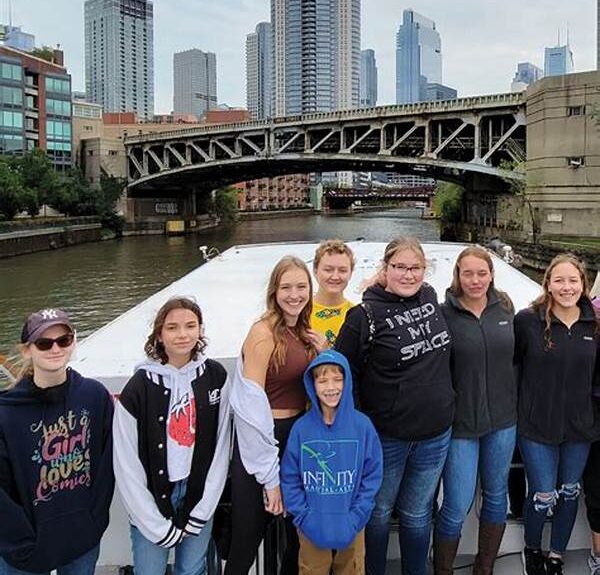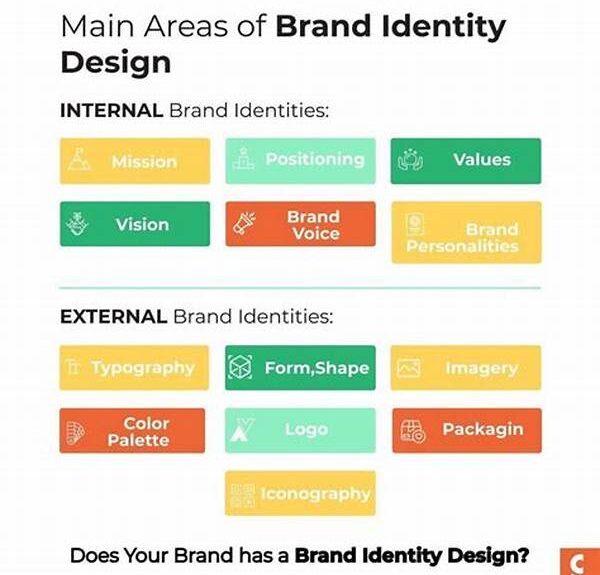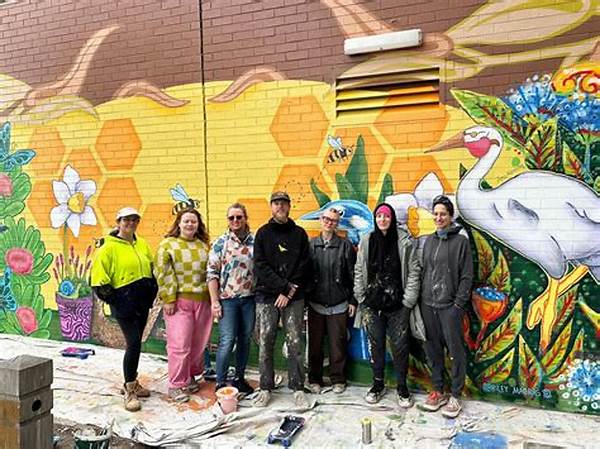Submitting your artwork to a gallery isn’t merely about ensuring your pieces are technically proficient. It involves crafting a gallery submission proposal that speaks to your artistic vision and resonates with the gallery’s ethos. While many artists focus on the creation of their art, few appreciate the intricacies involved in the submission process itself. By refining your proposal, you can significantly enhance your chances of being noticed by gallery curators.
Read Now : Designing Immersive Virtual Worlds
Understanding the Essentials of a Gallery Proposal
Crafting a gallery submission proposal requires a deep understanding of what galleries are looking for in an artist. Galleries are inundated with submissions, meaning your proposal needs to stand out. Begin by researching the gallery to understand its style, preferences, and the kinds of artists they typically showcase. Tailor your submission to align with their aesthetic, demonstrating that you’ve done your homework and showing them how your artwork complements their current lineup.
In addition to aligning your submission with the gallery’s vision, clarity and professionalism in your proposal are essential. Start with a compelling artist statement that succinctly communicates your artistic vision and process. Your portfolio should be meticulously organized, showcasing not only your best work but also reflecting the diversity and breadth of your creations. Remember, crafting a gallery submission proposal isn’t just about showing off your best art; it’s about making a case for why your work is a perfect fit for that specific gallery environment.
The presentation of your gallery submission proposal is also crucial. Ensure your documents are well-formatted, easy to read, and free of errors. A polished proposal reflects a professional attitude and shows that you value the gallery’s time and consideration. Be sure to include all requested materials and follow any specific guidelines provided by the gallery. Such attention to detail can set your proposal apart in a competitive submission landscape.
Key Elements of a Strong Proposal
1. Research and Customized Approach: Crafting a gallery submission proposal involves tailoring your pitch to the gallery’s specific preferences and aesthetics.
2. Compelling Artist Statement: A well-articulated artist statement is crucial in crafting a gallery submission proposal, defining your vision and artistic journey.
3. Portfolio Organization: A coherent and diverse portfolio is vital in crafting a gallery submission proposal, showcasing your range and best pieces.
4. Professional Presentation: Ensure all documentation is clear, concise, and well-organized, as professionalism in crafting a gallery submission proposal reflects positively on you.
5. Attention to Guidelines: Adhering to submission guidelines is crucial when crafting a gallery submission proposal, demonstrating respect for the gallery’s processes.
Strategies for Writing a Winning Proposal
When crafting a gallery submission proposal, it’s important to include elements that make your work more appealing to curators. Start by clearly defining your artistic voice—what sets your work apart and why it’s unique. This is your opportunity to let your personality shine and to distinguish your art from others. Be transparent about the techniques you use and the inspiration behind your work, lending authenticity to your proposal.
Moreover, crafting a gallery submission proposal requires fortitude and persistence. Galleries seek artists who are not only talented but also committed and consistent in their craft. Showcase your dedication to the art form in both your portfolio and your narrative. Demonstrating growth, evolution, and future aspirations can persuade a gallery that an investment in your work will yield dynamic returns. Finally, remember that rejection is part of the process. Take every piece of feedback, whether direct or indirect, as an impetus to refine your submissions further.
Crafting a gallery submission proposal also necessitates building relationships within the art community. Engage with galleries you admire by attending their exhibitions, networking with their artists, and participating in related art events. This inside perspective can provide invaluable insights into what the gallery finds appealing and offer you a chance to adjust your proposal to better meet their needs. Personal connections can often open doors that a simple submission cannot.
Insights and Practical Advice for Success
1. Know Your Audience: Understanding the gallery’s identity is crucial when crafting a gallery submission proposal, ensuring your work aligns with their mission.
2. Highlight Uniqueness: Emphasize what makes your art distinctive in your proposal.
3. Continuous Improvement: Use feedback to enhance your crafting a gallery submission proposal process.
4. Networking Matters: Building relationships can be as valuable as the proposal itself.
5. Precision in Communication: Clarity in your message is essential in crafting a gallery submission proposal.
Read Now : Structuring An Eye-catching Art Portfolio
6. Embrace Rejection: Learning from rejection is part of crafting a gallery submission proposal trajectory.
7. Showcase Versatility: Demonstrate adaptability in your artistry and proposal.
8. Maintain Authenticity: Be genuine about your artistic journey and intentions.
9. Use Clean Layouts: A tidy presentation aids in crafting a gallery submission proposal.
10. Detail Orientation: Scrutinize every part of your proposal for errors before submission.
The Subtle Art of Proposal Crafting
Crafting a gallery submission proposal is akin to weaving a complex tapestry. It involves knowing not only the technical aspects of your art but also the narrative behind it. This process demands much more than assembling a collection of works; it requires an insightful articulation of your journey as an artist. Begin by succinctly defining what you hope to achieve with your art and why a particular gallery is the best venue to showcase it. Make your artistic statement personal—an honest reflection of your vision, inspirations, and future aspirations.
Furthermore, presenting a well-organized portfolio is pivotal. A balanced portfolio that showcases your strongest works, including a variety of styles and mediums, can highlight the range of your abilities. Choose pieces that not only reflect your artistic style but also align with the gallery’s thematic exhibitions. At times, less is more; a curated selection of pieces can often be more impactful than an expansive collection. Remember, crafting a gallery submission proposal isn’t just about quantity, but the quality and cohesion of the pieces selected.
A gallery proposal also thrives on the authenticity of its narrative. It should resonate with the curators by providing insights into your development as an artist. Share your successes and challenges, and express your commitment to growth and exploration within the art world. Stories lend depth to your body of work, making them more memorable and relatable. This personal touch, woven meticulously through your proposal, can transform a mundane submission into a captivating narrative that captures the essence of your artistic identity.
Enhancing Your Proposals
In the journey of crafting a gallery submission proposal, it’s imperative to keep refining your approach. The evolving nature of the art world necessitates that you stay informed about current trends and gallery preferences. Regularly attending art exhibitions and engaging with the artistic community can offer fresh perspectives and inspiration for adapting your submissions. Feedback from previous proposals can be invaluable; use it to bolster your submissions, making them more compelling with each iteration.
When crafting a gallery submission proposal, consider the power of storytelling. Each piece in your portfolio should narrate part of your creative journey. Curators often look for the story behind the artwork—a narrative that ties your pieces together and gives them context. By effectively weaving your story throughout your proposal, you provide the gallery with a clearer understanding of your artistic essence, making it easier for them to see where your work fits within their space.
Additionally, never underestimate the power of presentation. The format and design of your proposal can speak volumes about your professionalism. Opt for clean, minimalistic designs that allow the artwork to take center stage. Avoid clutter and ensure every element of your proposal is aligned with your artistic brand. Each component, from the cover letter to the portfolio layout, should be thoughtfully crafted, reflecting the same level of care you put into creating your artwork. In the end, a well-crafted proposal not only serves as an introduction to your work but an enduring testament to your commitment to your craft.
The Essence of a Successful Proposal
A successful proposal is the culmination of various components working in harmony. It starts with a clear understanding of the gallery’s expectations, ensuring that every aspect of your submission is relevant and tailored to their unique requirements. Collaboration and communication with peers can also offer indispensable insights, assisting you in crafting a gallery submission proposal that resonates at a deeper level with curators.
Moreover, embracing the feedback loop can turn previous rejections into stepping-stones. Analyzing and understanding why a proposal wasn’t successful can guide improvements, turning criticisms into constructive alterations for future submissions. This dynamic process ensures that each proposal isn’t just a static piece of communication but an evolving document that grows stronger with each revision.
Finally, crafting a gallery submission proposal is as much an art as creating the pieces that accompany it. It is an exercise in patience, precision, and perseverance—qualities that any successful artist must possess. The proposal isn’t merely a pitch but an invitation to explore and engage with your artistic world, offering galleries a glimpse into the unique landscapes of your imagination.



